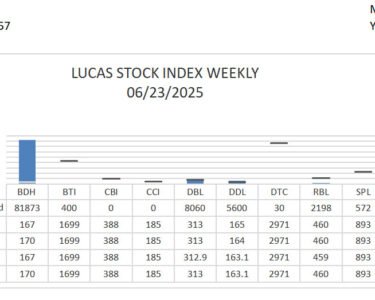- The Mexican Peso steadies around 19.30 as markets digest Trade Balance data and renewed tariff risks.
- US President Donald Trump threatens a 50% tariff on imports from the EU, taking effect on June 1st.
- USD/MXN remains pressured by declining sentiment over the health of the US economy.
The Mexican Peso (MXN) remains steady against the US Dollar (USD) despite US President Donald Trump’s threat of sweeping tariffs on the European Union (EU).
At the time of writing, USD/MXN is trading around the key psychological level of 19.30, with traders digesting developments out of Mexico and the United States.
Trump recommends 50% tariffs on the EU, increasing recession fears
On Friday, Mexico’s Trade Balance data showed the country reported a trade deficit of $88 million in April, below the $160 million forecast by analysts.
The report, published by the National Institute of Statistics and Geography of Mexico (INEGI) on a monthly basis, reflects the difference between a country’s exports and its imports. Despite posting a narrower-than-expected trade deficit, it still represents a swing from the $3.442 billion surplus reported in March.
Meanwhile, Trump published a post on his Truth Media social media, proposing a 50% tariff for imports from the EU, expected to take effect on June 1st. Trump stated that the EU was “very difficult to deal with” and “our negotiations are going nowhere”.
Recent developments in the US include the passage of Trump’s ‘one big beautiful’ tax bill and a downgrade in Moody’s credit rating. These events have contributed to a weaker dollar, which has boosted demand for alternative assets.
Mexican Peso daily digest: US fiscal and tariff concerns linger
- The proposed tariffs of 50% on the EU and 25% on Apple raise concerns about their impact on the global economy.
- Additionally, fiscal concerns surrounding the passing of Trump’s proposed tax bill have increased. The “Big, Beautiful Bill” is expected to increase the US federal deficit by $3.8 trillion over the 2026-2034 period, according to the US Congressional Budget Office.
- The recent rating downgrade by Moody’s agency, combined with President Trump’s tax bill, has weighed on the US Dollar. A rating downgrade reflects reduced faith in the US to repay its debt.
- The CME FedWatch tool indicates a 94.7% probability that interest rates will remain in the current range of 4.25%-4.50% in June, with analysts not expecting any Fed rate cut until September.
- With the Bank of Mexico (Banxico) cutting interest rates by 0.50% at its May meeting, the divergence in interest rate differentials between both countries should support demand for the USD.
- However, on Thursday, Mexico’s 1st half-month inflation data came in higher than expected at 0.09%, reflective of an increase in price pressures.
- Thursday’s data also showed that Mexico’s Growth Domestic Product (GDP) grew by 0.2% on the quarter and by 0.8% on the year, in line with market expectations.
- With the economy seen as resilient despite increased tariffs from the US, it could reduce pressure on Banxico to continue cutting rates in the near term.
Mexican Peso technical analysis: USD/MXN trades near 19.30
USD/MXN remains near 19.30, with prices consolidating below the 10-day and 20-day Simple Moving Average (SMA) at the respective levels of 19.39 and 19.49.
With a break above 19.30 potentially bringing these levels into play, a move below would suggest that sellers are in control of the trend.
USD/MXN daily chart

The Relative Strength (RSI) indicator is at 38.92, showing downside momentum is firm.
Should the downtrend hold, a retest of the May low of 19.23 would bring the October low of 19.11 into sight, with the next layer of support at the next psychological level of 19.00.
Tariffs FAQs
Tariffs are customs duties levied on certain merchandise imports or a category of products. Tariffs are designed to help local producers and manufacturers be more competitive in the market by providing a price advantage over similar goods that can be imported. Tariffs are widely used as tools of protectionism, along with trade barriers and import quotas.
Although tariffs and taxes both generate government revenue to fund public goods and services, they have several distinctions. Tariffs are prepaid at the port of entry, while taxes are paid at the time of purchase. Taxes are imposed on individual taxpayers and businesses, while tariffs are paid by importers.
There are two schools of thought among economists regarding the usage of tariffs. While some argue that tariffs are necessary to protect domestic industries and address trade imbalances, others see them as a harmful tool that could potentially drive prices higher over the long term and lead to a damaging trade war by encouraging tit-for-tat tariffs.
During the run-up to the presidential election in November 2024, Donald Trump made it clear that he intends to use tariffs to support the US economy and American producers. In 2024, Mexico, China and Canada accounted for 42% of total US imports. In this period, Mexico stood out as the top exporter with $466.6 billion, according to the US Census Bureau. Hence, Trump wants to focus on these three nations when imposing tariffs. He also plans to use the revenue generated through tariffs to lower personal income taxes.




